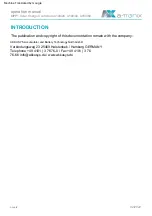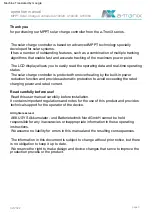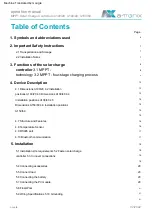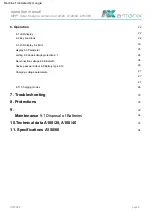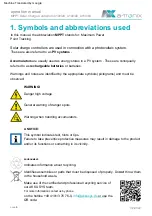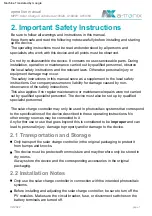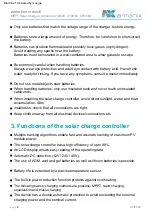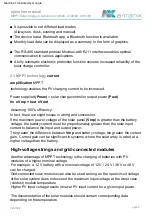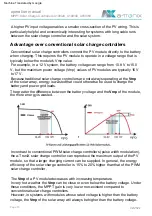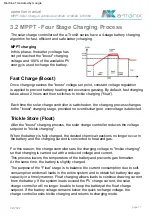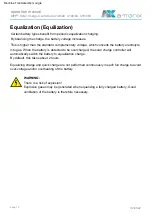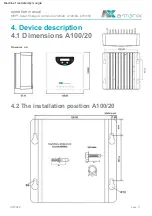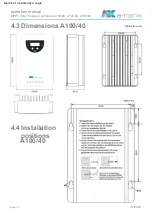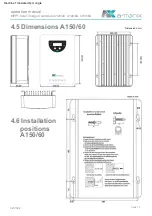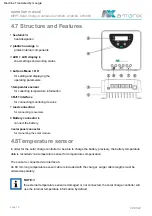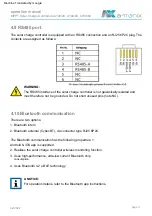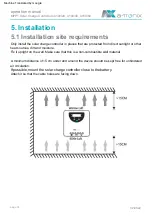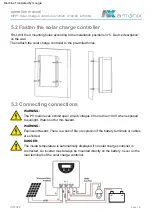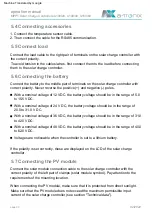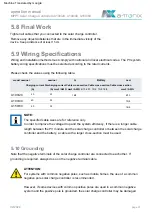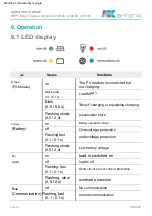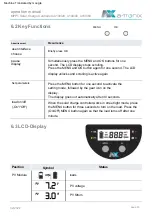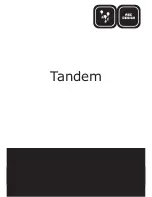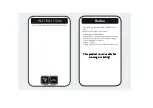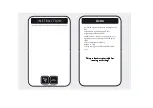
The solar charge controller has a high efficiency of up to 98%.
Do not use metal objects near batteries.
The use of AGM, acid and gel batteries as well as lithium batteries is possible.
Always wear eye protection and avoid eye contact with battery acid. Have fresh
water ready for rinsing. If you have any symptoms, consult a doctor immediately.
When installing the solar charge controller, avoid direct sunlight, water and heat
accumulation. After
installation, check that all connections are tight.
Only use batteries that match the voltage range of the charger to store energy.
Automatic DC detection (12V / 24V / 48V).
The built-in power reduction function protects against overheating.
When handling batteries, only use insulated tools and never touch uninsulated
cable ends.
Battery life is extended by a precise temperature sensor.
Batteries can produce flammable and possibly toxic gases (oxyhydrogen).
Avoid creating any sparks near the battery.
The device has a double automatic protection to avoid exceeding the nominal
charging power and the nominal current.
The following battery charging methods are possible: MPPT, rapid charging,
equalization and trickle charging.
Batteries store a large amount of energy. Therefore, be careful not to short-circuit
the battery.
Keep children away from all electrical devices/connections etc.
An LCD display allows easy reading of the operating data.
Be extremely careful when handling batteries.
Multiple tracking algorithms enable fast and accurate tracking of maximum PV
module power.
Batteries must be installed in a well-ventilated area to allow gases to escape.
operation manual
02/2022
page
8
3. Functions of the solar charge controller
MPPT Solar Charge Controllers A100/20, A100/40, A150/60
Machine Translated by Google


